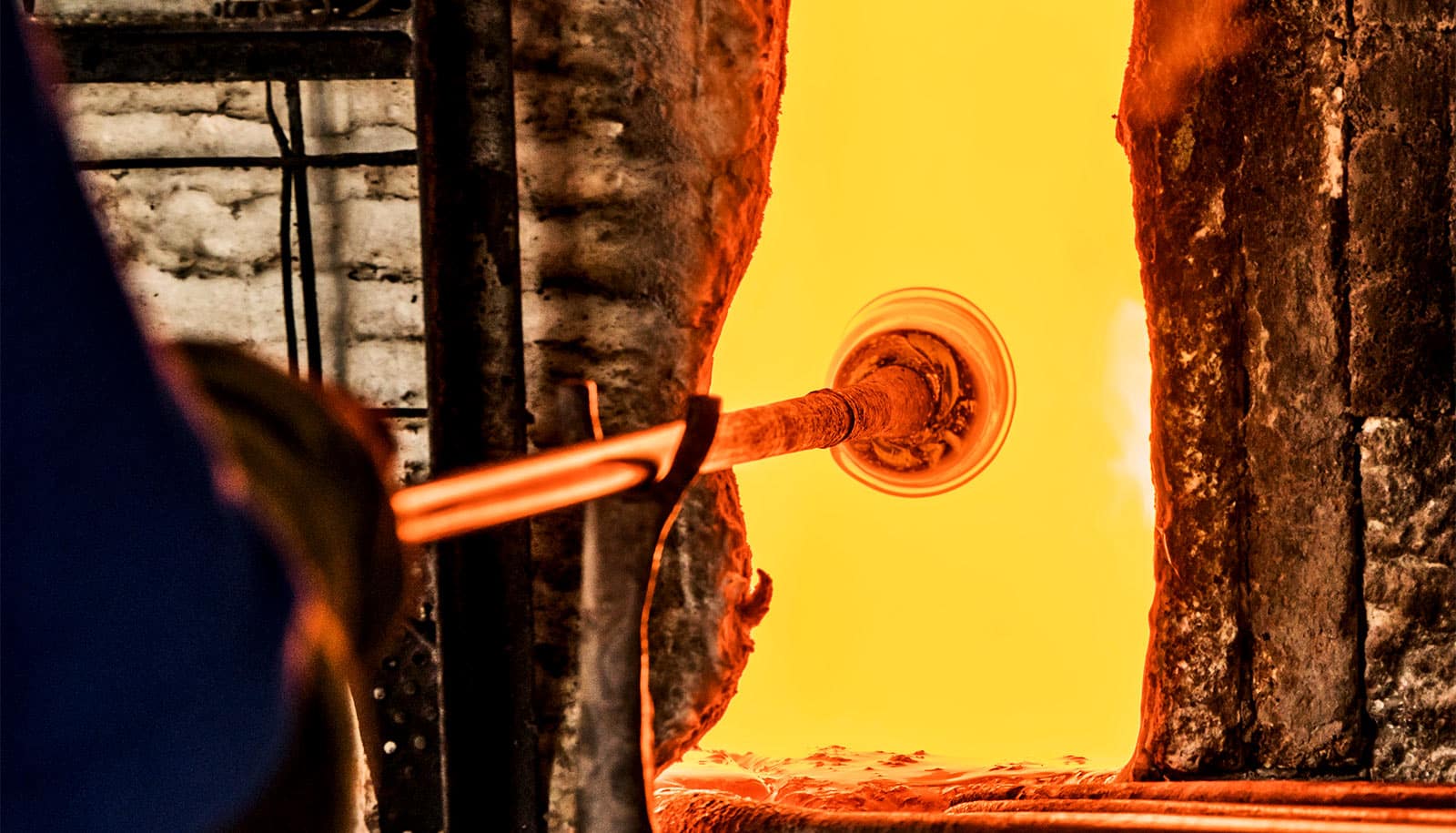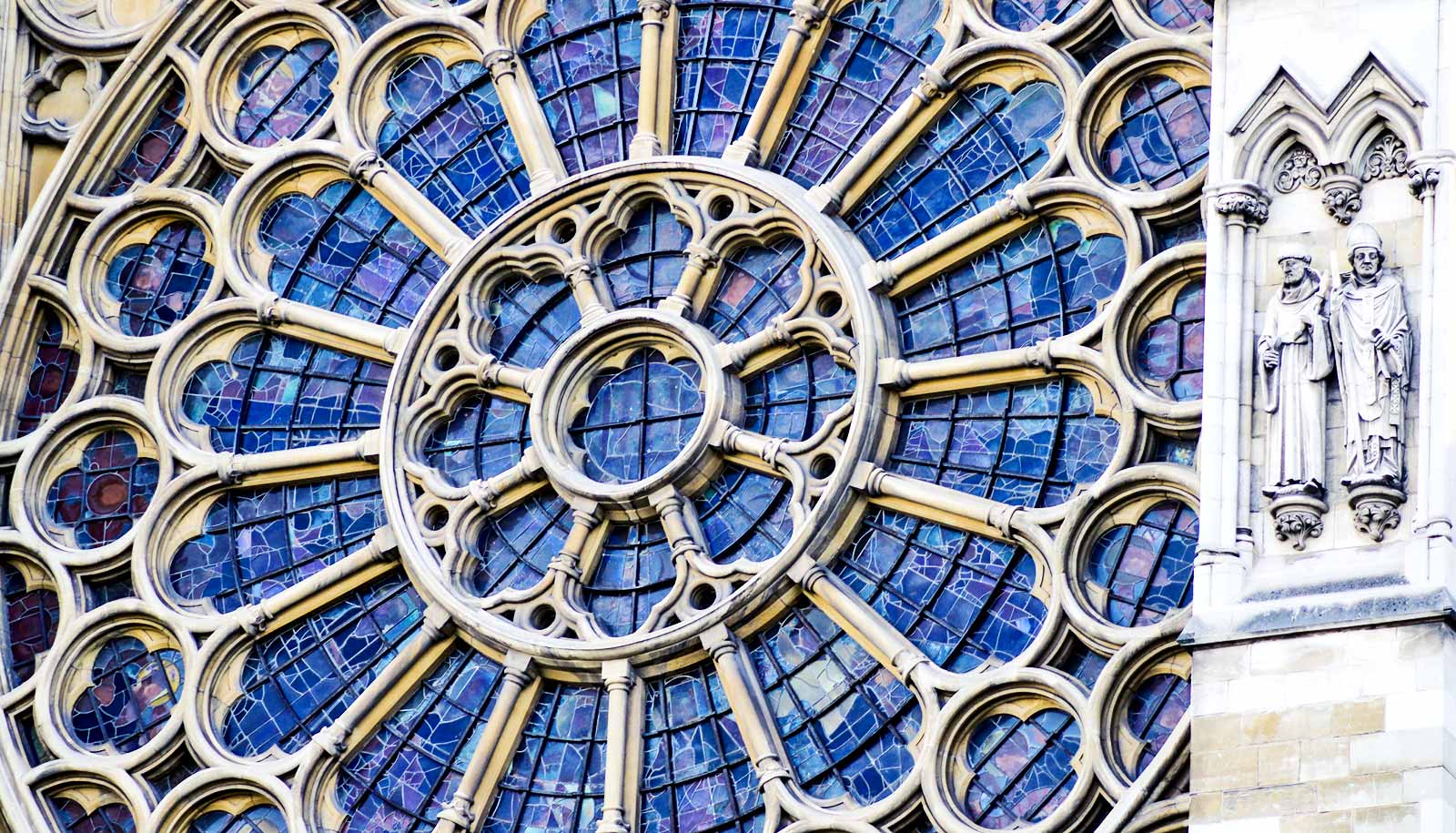A new clue may get researchers closer to cracking the physics mystery of why glass looks and behaves the way it does.
Given how abundant glass is, a surprising amount remains unknown about the material.
Researchers conducted one of the first physical experiments to help explain the glass transition, the process when heat physically changes the material from something that is rock-hard to something soft and malleable.
It’s a process that is incredibly useful for shaping and molding glass but a perplexing one for physicists, because on a molecular level glass looks like a liquid, but its mechanical properties resemble a solid.
Many physicists have rallied around trying to understand how glass can do that. The new research provides information to help answer that question.
‘A continuum between a liquid and a solid’
The perplexing nature of the glass transition can be better understood by looking at a chunk of ice and a piece of window pane side-by-side, explains Eric Corwin, a physicist at the University of Oregon. In nearly every way, these materials look and behave in a similar manner when examined at a low temperature: They are both clear, sharp, and brittle. If dropped, they will crack.
But the difference emerges when heat is introduced into the equation. The ice abruptly melts at 32 degrees Fahrenheit and turns into water. But glass does something different. It just gets softer and softer until it can flow and be easily molded.
The glass transition involves a puzzling mix of two different states of matter. Under an electron microscope, the piece of window pane looks like a liquid through its random arrangement of atoms. But it acts like a solid through its physical properties, unlike the block of ice, which makes a very clear transition between crystalline solid and liquid water.
“Glass exists on a continuum between a liquid and a solid,” Corwin says. “Because it doesn’t have an abrupt transition from one easily identifiable state to another, it’s made understanding the physics of it really difficult.”
Researchers have seen a breakthrough in understanding this phenomenon as they’ve been able to produce a mathematical theory that helps explain the glass transition. But little evidence has emerged suggesting this theory is applicable in the real world.
That is, until the results from the researchers’ experiment proved that it can work through a physical experiment.
They decided to probe the glass transition using a substance called colloids, a model system for glasses in which microscopic particles floating in water play the same role as molecules in glass. They were able to replicate the glass transition by jiggling the colloids in liquid and then letting them settle, a process that mimicked the heating and cooling of glass.
Andrew Hammond, a doctoral student who graduated from Corwin’s lab last year who led the research, colored a select number of the transparent colloids with a black dye so he could watch what happened to them throughout the transition. He found that the material behaved as the theory predicted: As the system settled under gravity these black colloids got entirely surrounded by their neighboring colloids, which the physicists refer to as getting “caged.”
However, the theory also predicted an entirely new phase of matter, called a “Gardner” or “marginal” phase, as the particles continued to settle. In this phase the cages themselves would be constantly shifting, leading to a solid that is always microscopically breaking and fixing itself. This is exactly what Hammond saw under the microscope.
Capturing the moment in 60,000 frames per second
One of the primary reasons for the lack of physical experimentation on the glass transition is because it’s challenging to conduct.
“You have to measure incredibly precise things at incredibly high speeds,” Corwin says.
For starters, the material used for their experiment was about as small as the naked eye can detect; each colloid is just 50 microns across, about the width of the finest human hair. And the transition happened so quickly that it had to be captured through a high-speed camera that shot 60,000 frames in a second. From start to finish, each set of data was a mere two seconds, but the researchers captured 100,000 pieces of visual information during that time.
Because the materials were so small and sensitive, the researchers also had to avoid external vibrations that could disrupt the data, like the opening of a door two floors away. Hammond realized the key to conducting such a sensitive experiment was to do it in the middle of the night, when everyone else had left the building.
He started timing his lab work around the hour the air conditioning units shut off, which was 11 PM He produced the first really convincing set of data over Memorial Day weekend, when campus was deserted for the holiday weekend.
But their commitment and innovation was worth it because the pair of physicists succeeded in producing data that contributes to building a better understanding of the glass transition. The hope in the field is that more knowledge will lead to an enhanced ability to leverage the material into new uses across several industries.
“Glass is an amazing material, but it’s not very strong,” Corwin says. “If we could understand the glass transition better, we could imagine being able to engineer incredibly strong and rigid materials that could be used in technology and manufacturing.”
The paper appears in the Proceedings of the National Academy of Sciences.
Source: University of Oregon



